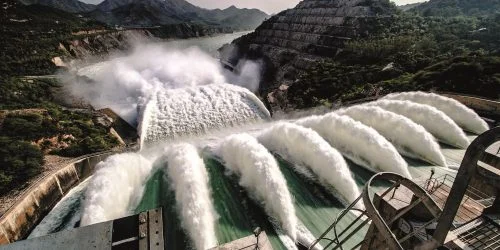Islamabad, Mar 17 2025: Pakistan is facing an alarming water crisis as the Mangla Dam has reached its dead level, bringing hydroelectric power generation to a complete halt.
According to reports, other major water reservoirs, including Tarbela Dam and Chashma Barrage, are also approaching their minimum operational levels, intensifying concerns over water availability and energy production in the coming months.
A spokesperson from the Water and Power Development Authority (WAPDA) confirmed that the Mangla Dam has officially hit its lowest operational threshold, forcing authorities to cease power generation.
READ MORE:
New China-Pakistan Highway Research Unveiled to Enhance Resource ReuseThe situation is equally dire at Tarbela Dam, which stands just two feet above its dead level, and Chashma Barrage, which is barely one foot above its critical threshold. These developments underscore the urgent need for effective water management strategies to mitigate potential shortages.
Current Water Levels in Major Reservoirs
- Tarbela Dam: 1404.93 feet (Dead Level: 1402 feet | Maximum Capacity: 1550 feet)
- Mangla Dam: 1050 feet (Dead Level: 1050 feet | Maximum Capacity: 1242 feet)
- Chashma Barrage: 639.30 feet (Dead Level: 638.15 feet | Maximum Capacity: 649 feet)
The steep decline in water reserves is already having a noticeable impact on power generation and agricultural irrigation.
Experts warn that if water levels continue to drop, Pakistan could face severe electricity shortages, which would further strain the economy and disrupt food production.
In addition to these reservoirs, other key barrages, including Jinnah, Taunsa, Guddu, Sukkur, and Kotri, are also witnessing fluctuating inflows and outflows.
This inconsistency is exacerbating concerns over the country’s ability to manage its water resources effectively.
The ongoing crisis highlights the pressing need for long-term water conservation initiatives, improved storage infrastructure, and better regulation of water usage.
Without immediate intervention, Pakistan may struggle to meet its energy and agricultural needs, worsening the challenges faced by millions of people across the country.









